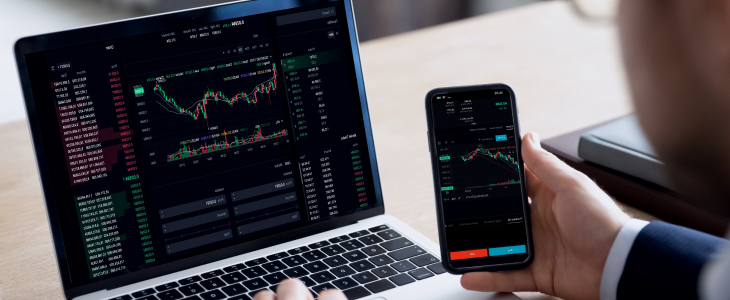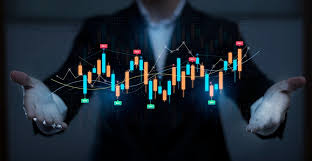
Forex trading, or foreign exchange trading, has exploded in popularity, offering traders opportunities to profit from fluctuations in currency values. Understanding how to navigate this vast financial market is crucial for both novice and experienced traders. In this article, we will provide a comprehensive example of Forex trading, complete with strategies, market analysis, and profit calculation. For those looking for reliable trading services, forex trading example Trading Broker UZ offers various tools and resources to help you get started.
What is Forex Trading?
Forex trading involves the simultaneous buying of one currency and selling another. The currency pairs—such as EUR/USD or GBP/JPY—indicate the value of one currency against another. The Forex market operates 24 hours a day, five days a week, allowing traders to respond rapidly to market fluctuations. Unlike stock markets, trading in Forex does not take place on a centralized exchange, but instead, it is conducted over-the-counter (OTC) through a network of banks, brokers, and financial institutions.
Understanding Currency Pairs
In Forex trading, currencies are quoted in pairs. The first currency in the pair is known as the base currency, while the second is called the quote currency. For example, in the pair EUR/USD, the Euro is the base currency, and the US dollar is the quote currency. Understanding how to read these currency pairs is fundamental for traders. If the EUR/USD pair is quoted at 1.1000, it means that 1 Euro is equivalent to 1.1 US Dollars. A trader can profit by speculating whether the value of the Euro will rise or fall relative to the US Dollar.
Example of a Forex Trade
Let’s consider a hypothetical scenario: A trader anticipates that the Euro will strengthen against the Dollar due to upcoming positive economic data from the Eurozone. The trader decides to buy 10,000 units (or 0.1 lots) of the EUR/USD currency pair at an exchange rate of 1.1000. This means the trader is committing $11,000 (10,000 * 1.1000).
After executing the trade, the trader closely monitors the market. A few days later, the economic data is released, and it shows strong growth indicators in the Eurozone. The EUR/USD exchange rate increases to 1.1200. The trader decides to close the position at this rate.
To calculate the profit:
- Entry Price: 1.1000
- Exit Price: 1.1200
- Change in Value: 1.1200 – 1.1000 = 0.0200
- Profit per unit: 0.0200 (for 10,000 units) = $200

Therefore, the trader makes a profit of $200 from this trade. As with any trading activities, it is essential to note that Forex trading does not guarantee profits, and substantial losses can also occur based on market dynamics.
Risk Management in Forex Trading
One of the most vital aspects of Forex trading is effective risk management. Traders often utilize various strategies to protect their capital. This includes setting stop-loss orders, which automatically close trades at a predefined loss level, and implementing position sizing to manage exposure to market volatility.
For example, if our trader decides to set a stop-loss order for this EUR/USD trade at 1.0900, it would limit their losses to $100 if the market moves against them. This helps in maintaining discipline and safeguarding capital, allowing traders to endure potential losses without significantly impacting their overall trading portfolio.
Technical Analysis and Market Trends
To enhance their trading effectiveness, Forex traders often rely on technical analysis. This involves assessing historical price data and using various indicators and chart patterns to predict future price movements. Common tools used in technical analysis include moving averages, Relative Strength Index (RSI), and Bollinger Bands.
By identifying trends through technical analysis, traders can make informed decisions. For instance, if the analysis indicates that the EUR/USD pair has been in an upward trend, it may suggest that buying or holding positions could be beneficial until the trend indicates a reversal.
Fundamental Analysis: Monitoring Economic Indicators
In addition to technical analysis, fundamental analysis plays a crucial role in Forex trading. Traders monitor key economic indicators such as Gross Domestic Product (GDP), unemployment rates, and inflation data, as these factors significantly affect currency values.
For instance, if the latest GDP report indicates a contraction in the Eurozone, it may suggest a weakening Euro. Consequently, traders may decide to sell the EUR/USD pair in anticipation of further declines. Understanding the interplay between economic indicators and currency valuations is key to making informed trading decisions.
Conclusion: Putting Theory into Practice
In conclusion, Forex trading provides ample opportunities for traders knowledgeable about the market. The example above illustrates how to execute a trade, calculate profit, and implement risk management strategies. Additionally, understanding both technical and fundamental analysis is vital to navigating the complex Forex landscape effectively.
As you embark on your Forex trading journey, remember that success requires ongoing education, practice, and discipline. Consider utilizing resources available through reputable trading platforms, such as Trading Broker UZ, to enhance your trading strategies and improve your overall performance in the market.
发表回复